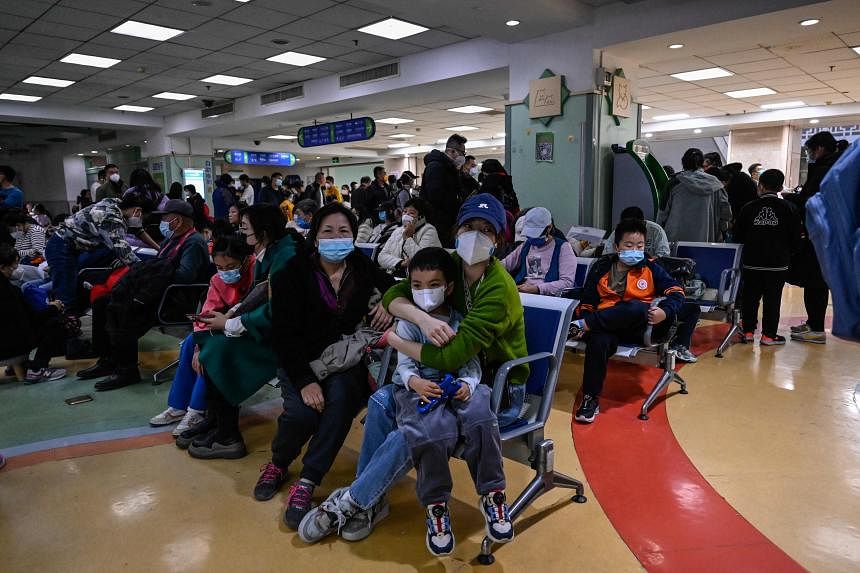BEIJING - Hospitals and grassroots medical institutions throughout China have intensified their efforts to tackle the surge in respiratory illnesses, including extending operating hours on weekdays and establishing dedicated sections for paediatric services.
In Wuhan, the children’s hospital has enhanced its services by extending operating hours. The morning clinic now opens at 7.30am and evening services are available until 10pm. The introduction of night and noon clinics has helped manage excess patient flow, according to the hospital.
Parents are also benefiting from a more streamlined healthcare process.
On Dec 2, at Wuhan Children’s Hospital’s information desk, many parents, guided by nurses, opted for a “self-check” option. This involved completing preliminary tests like blood and urine examinations, allowing doctors to swiftly assess results during consultations, significantly reducing waiting times.
A Wuhan resident, who identified himself as Mr Wang, said the new measure really “saves us much time”.
Dr Lu Xiaoxia, vice-president of Wuhan Children’s Hospital and chief physician of the respiratory department, said: “We promptly allocate additional appointment slots for each doctor and establish a rational schedule for inpatient doctors to bolster outpatient staffing.”
Simplifying processes and reducing patient waiting times is a common strategy adopted by hospitals nationwide.
In the Ningxia Hui autonomous region, Yinchuan Maternal and Child Health Hospital experienced a fivefold increase in paediatric emergency visits from Nov 1 to 24, compared with the same period in 2022.
To address the rising pressure on paediatric care, the hospital introduced the region’s first children’s twilight clinic, operating from 6pm to 10pm on regular clinic days.
Dr Wang Jun, a paediatrician at the hospital, said that three doctors are now responsible for the newly deployed slot and voluntarily choose to put in extra hours after finishing regular shifts.
“It’s not just paediatricians, the entire hospital’s medical and nursing staff are contributing to support,” said Dr Wang.
Dr Jiang Shaohua, director of the emergency department at Yinchuan Maternal and Child Health Hospital, said that by reducing waiting times and extending working hours, the adjustment has alleviated difficulties for many parents, particularly those from the working class who are usually caught up with work and might not have the time to take their children to see a doctor.
In Tianjin, Tianjin Children’s Hospital has introduced a “test first, then treat” approach in its emergency service, which means eligible patients can undergo tests before waiting for consultations.
It is part of a slew of new measures simplifying the consultation process, and the hospital has seen a reduction in patient numbers in the past week.
These measures came as China’s top health authority required localities to “exhaust all means” to increase paediatric service capacity and stock up on paediatric medications and relevant medical materials to cope with the spike in respiratory illnesses among children.
In addition to addressing immediate healthcare needs, there is a growing focus on preventive measures for respiratory diseases and winter health practices.
CHINA DAILY/ASIA NEWS NETWORK

